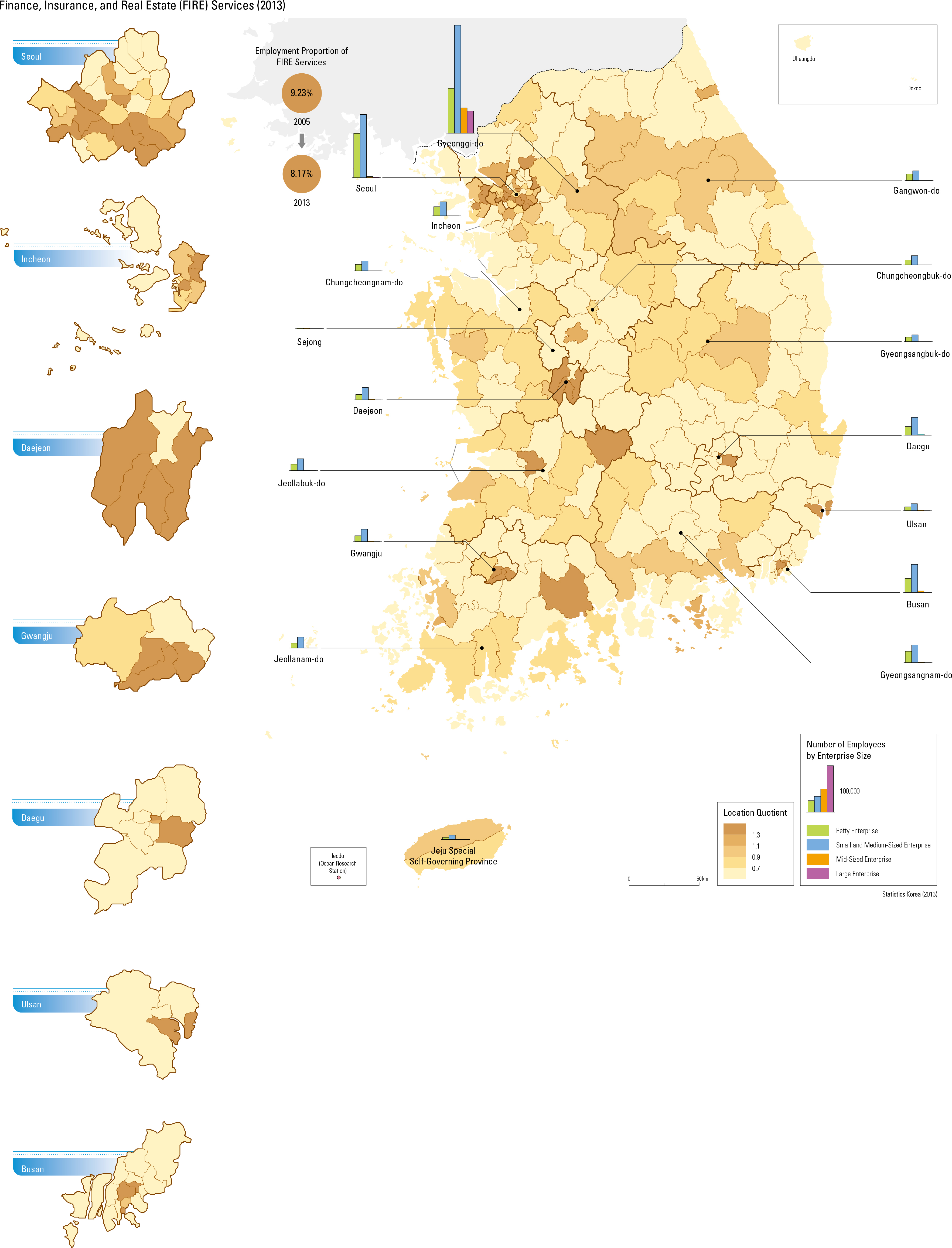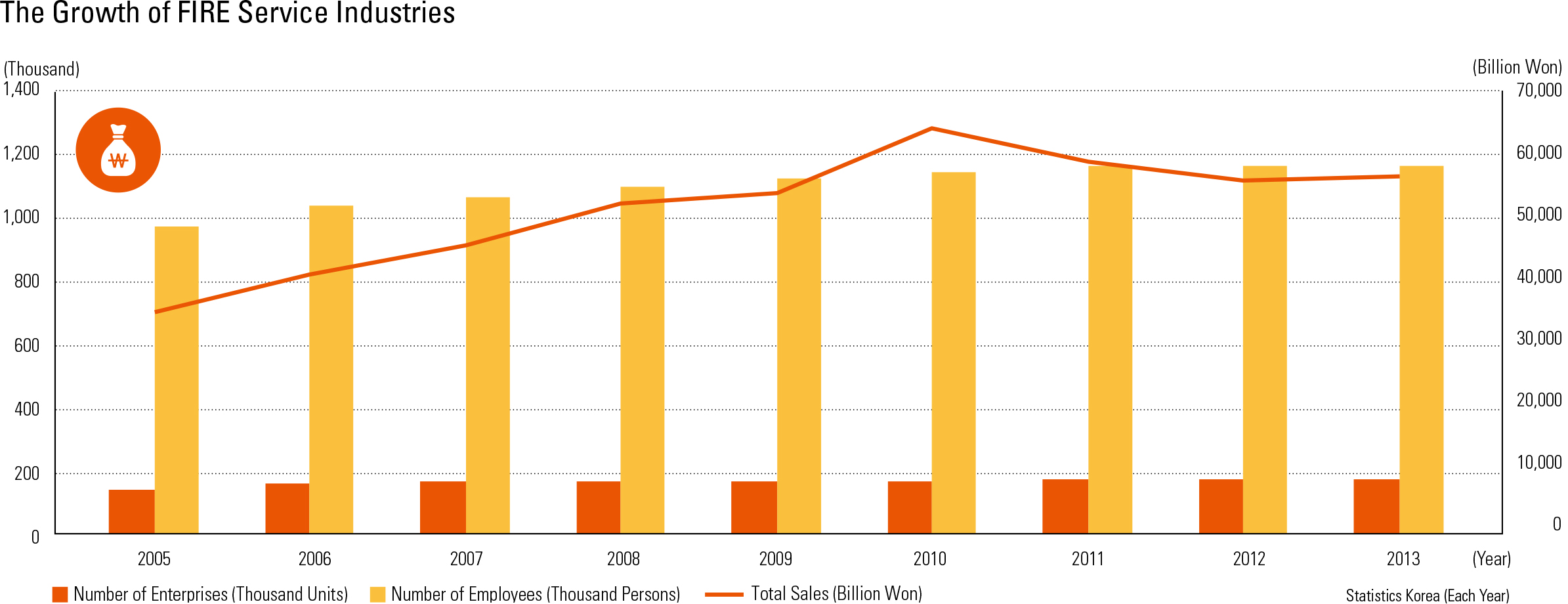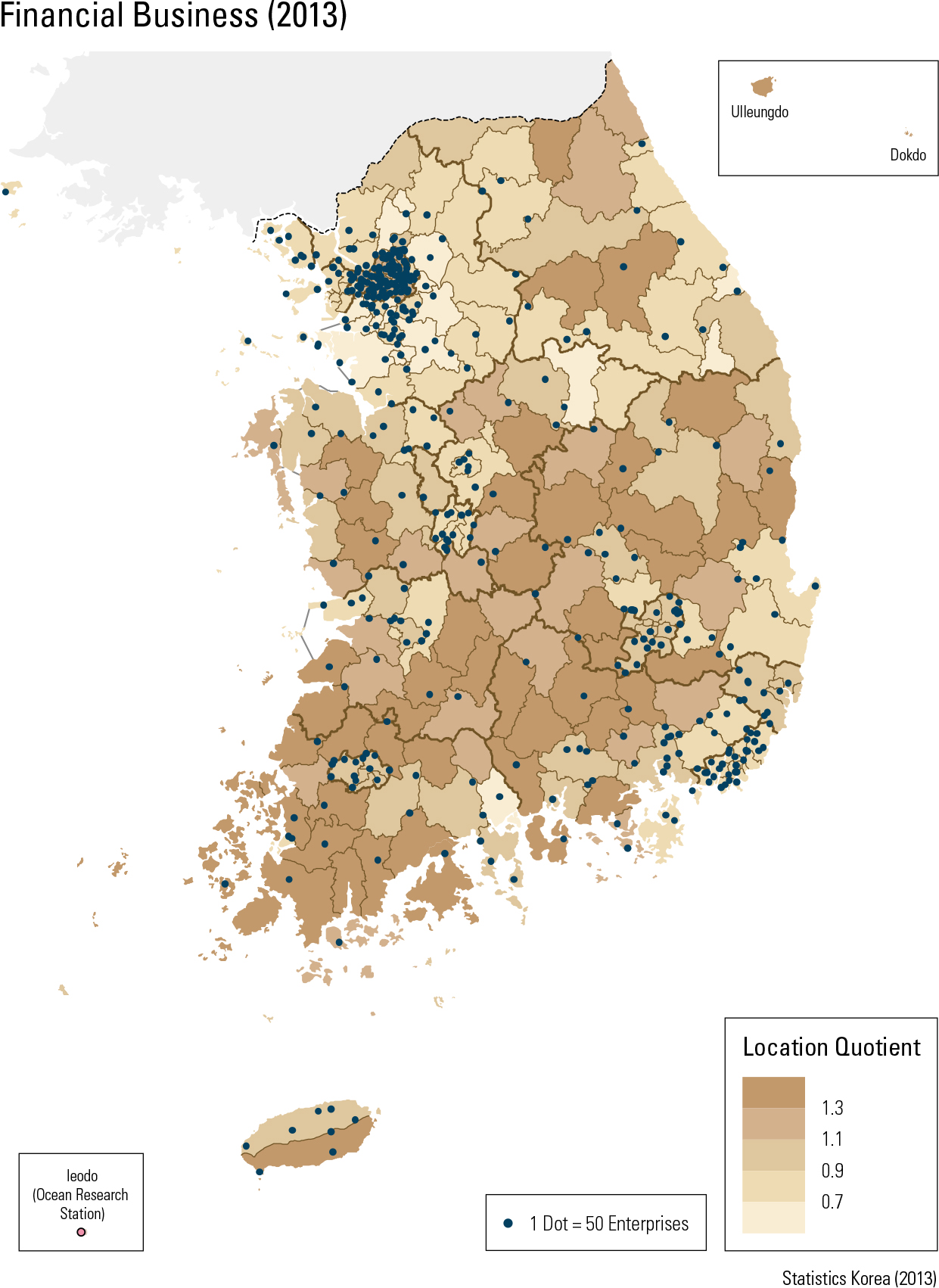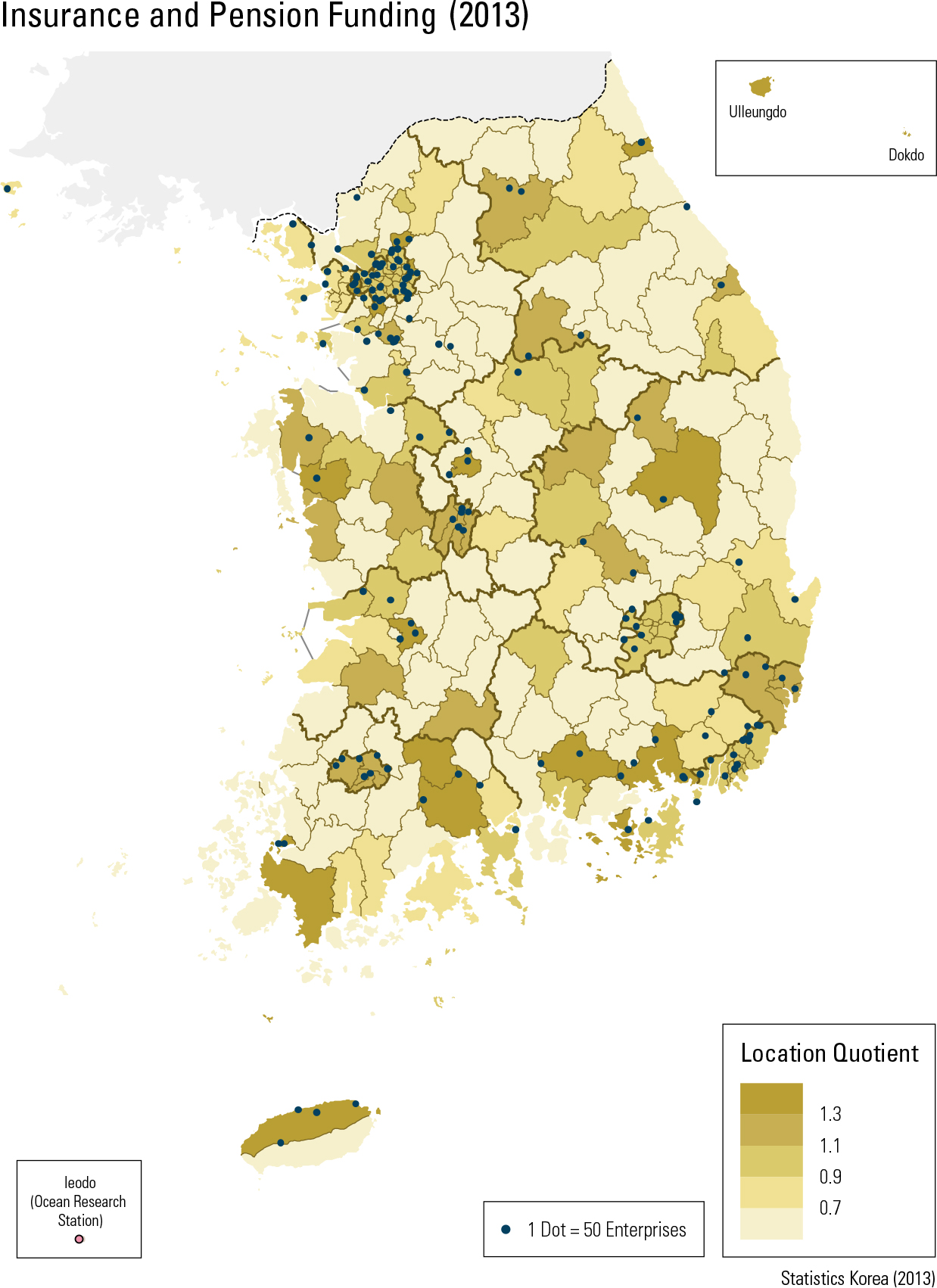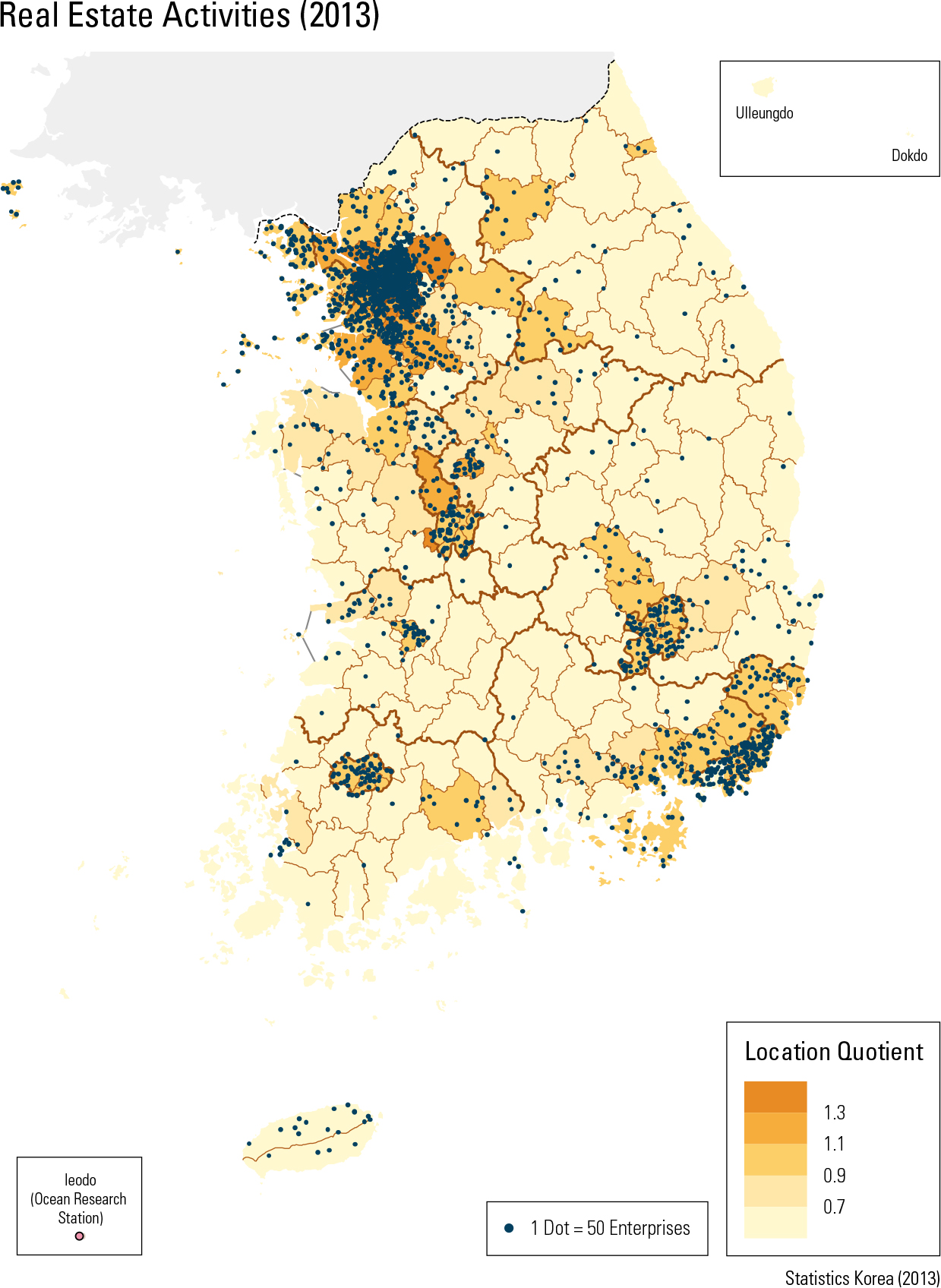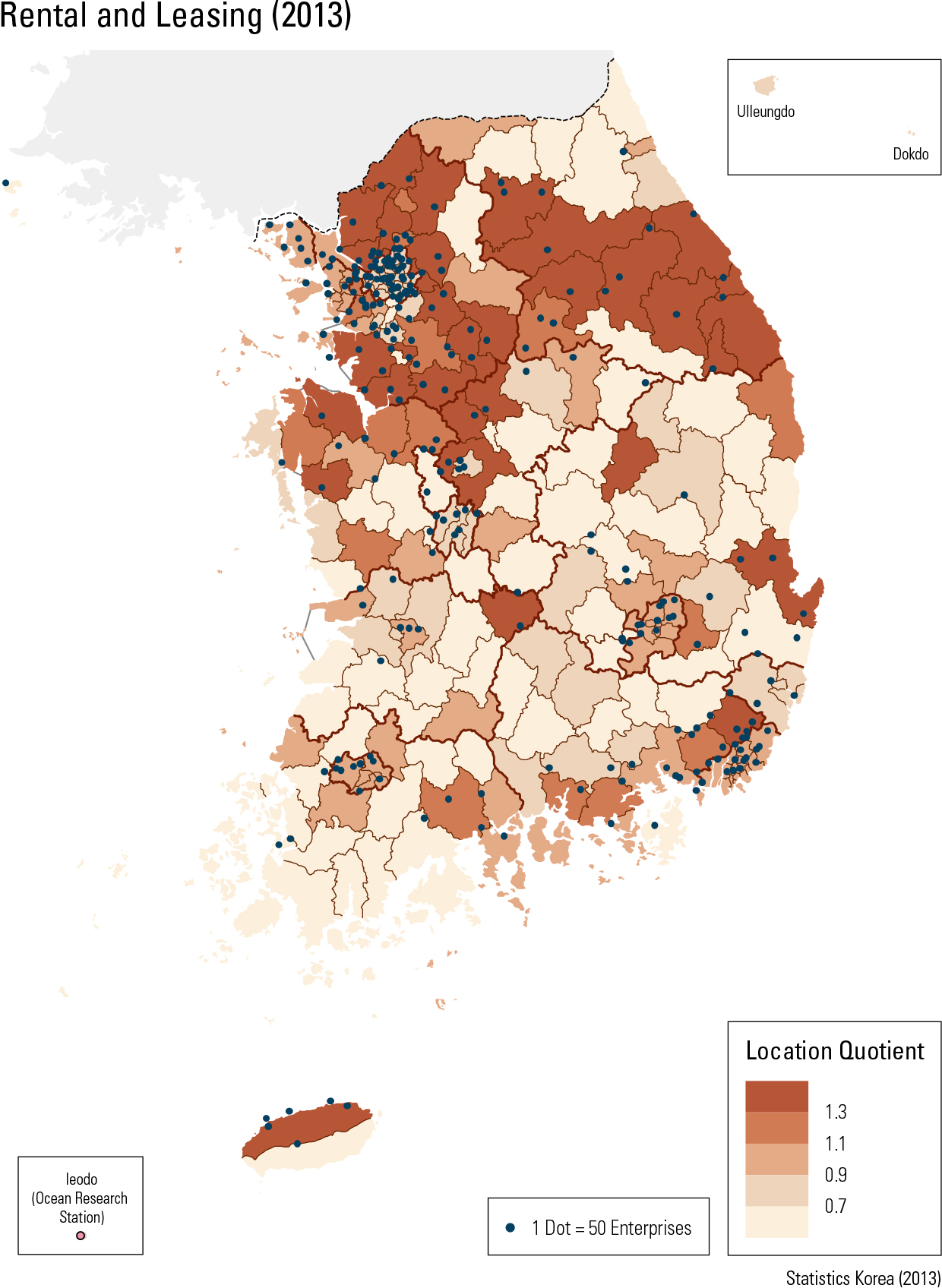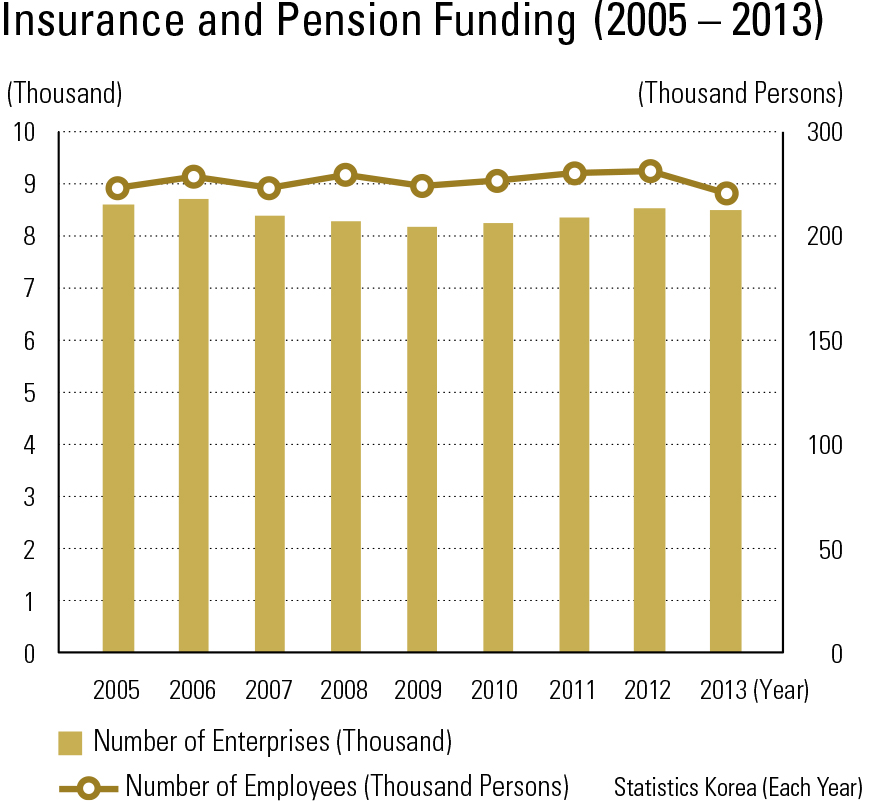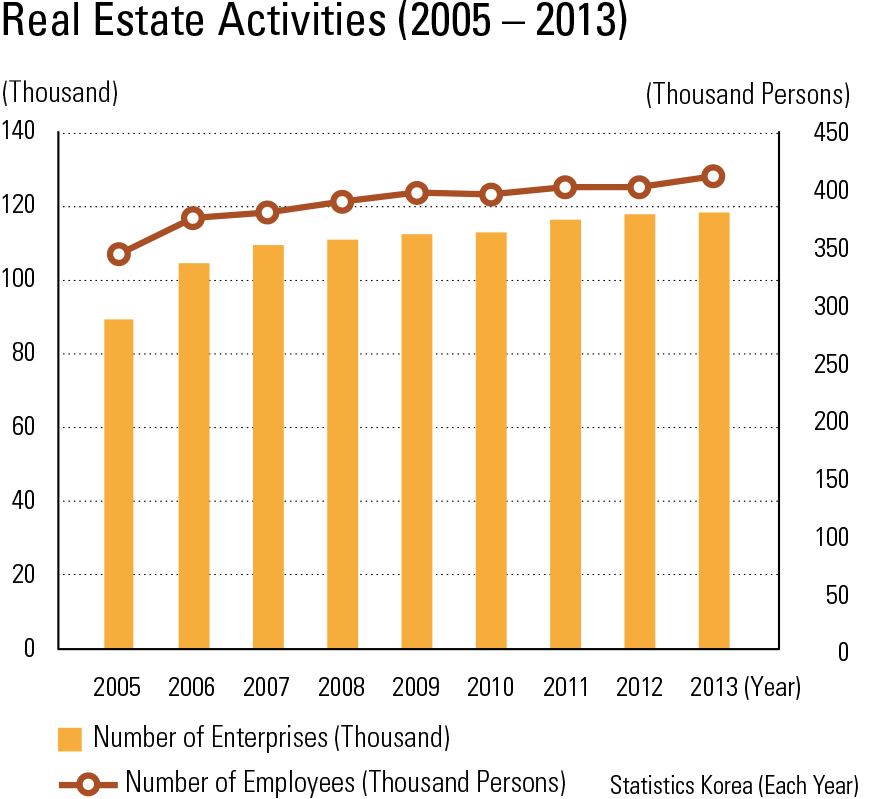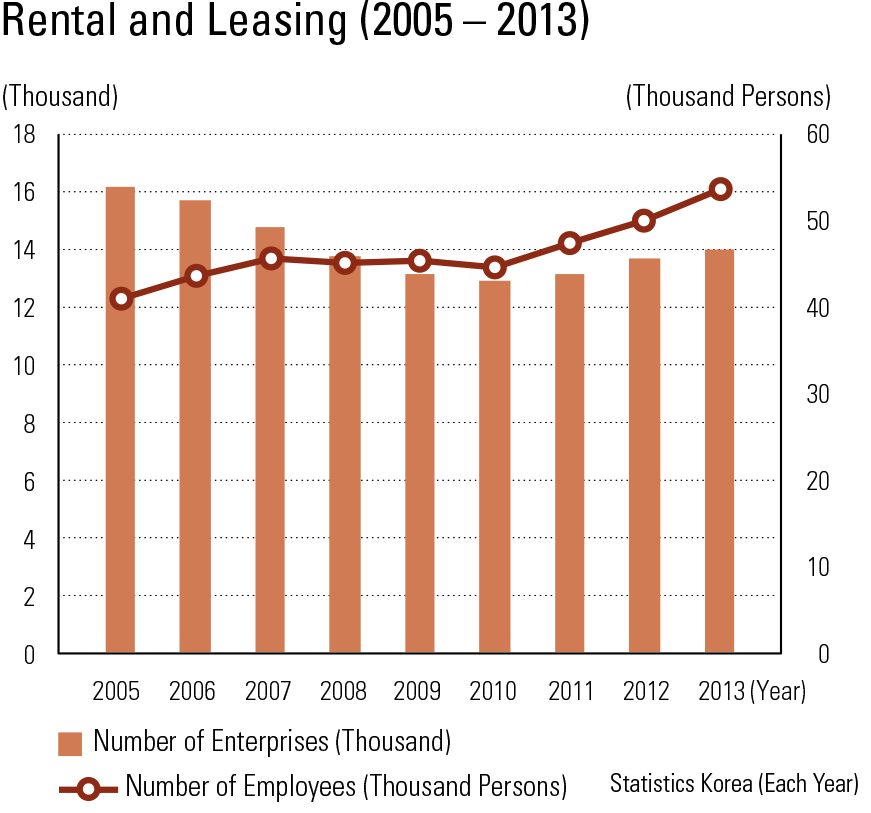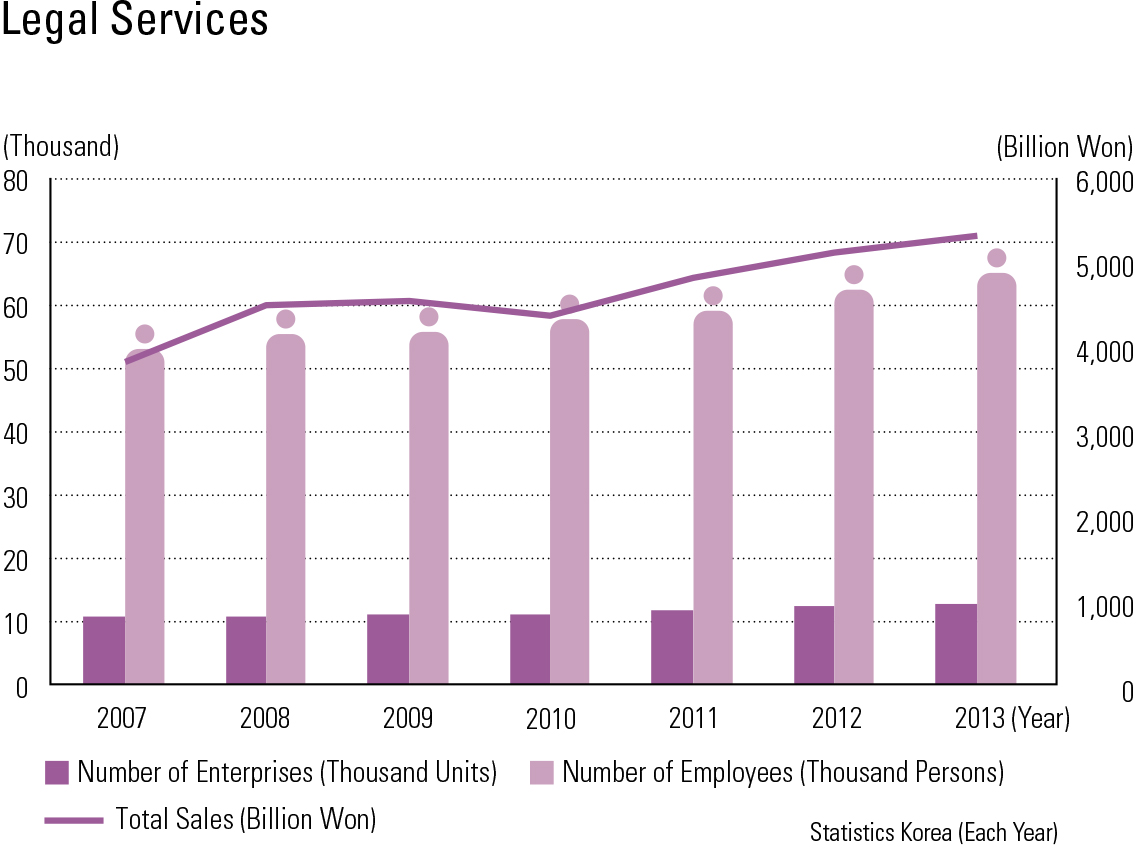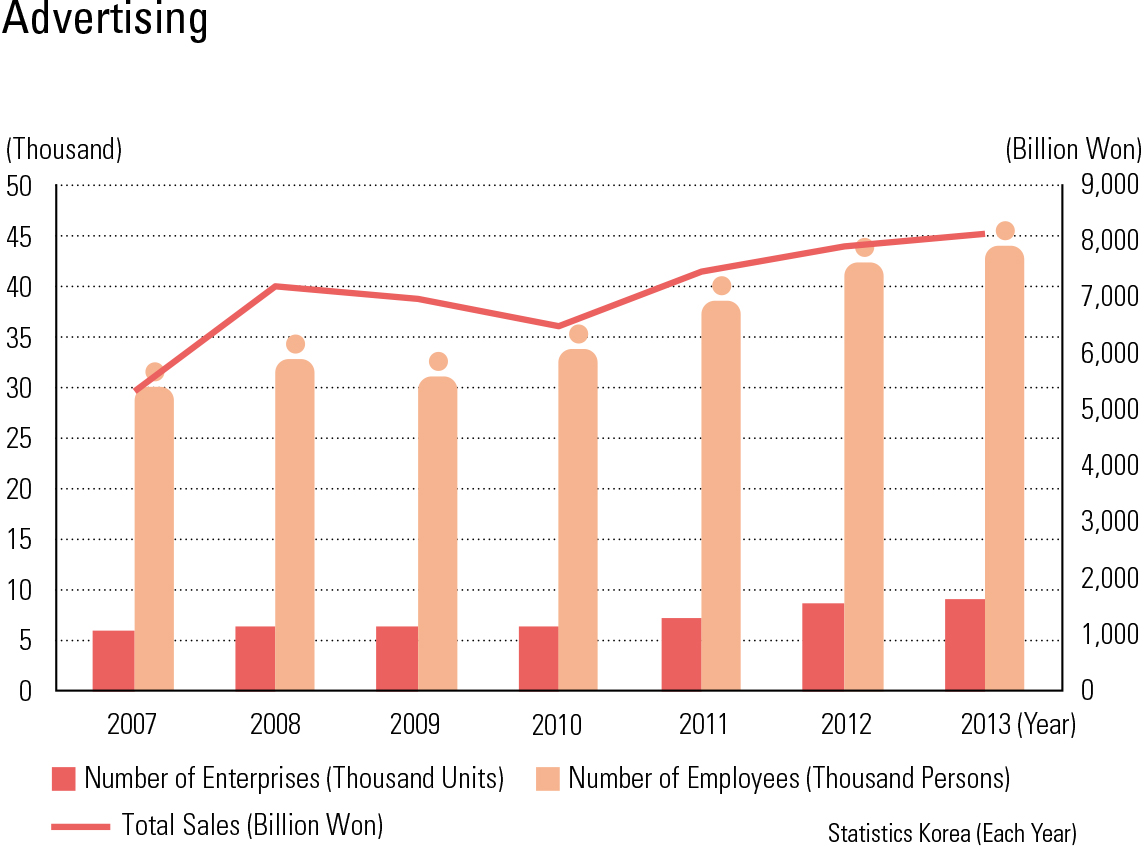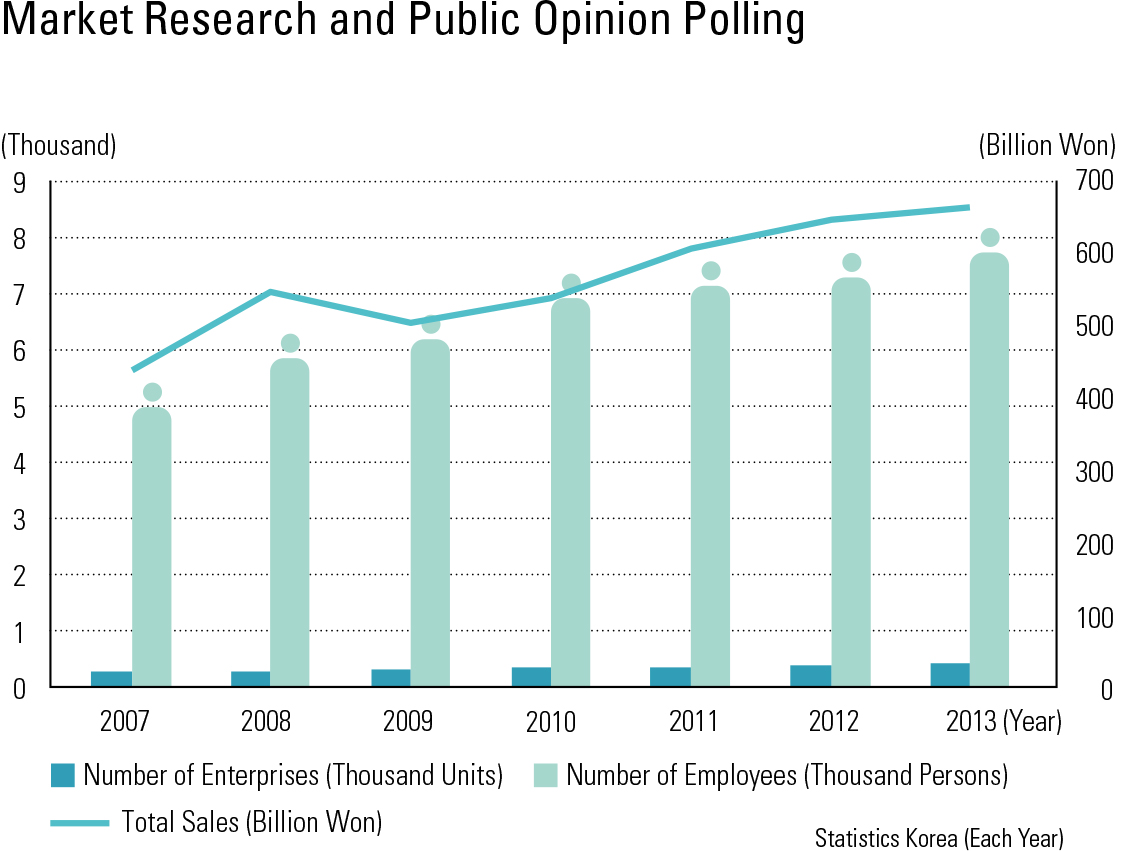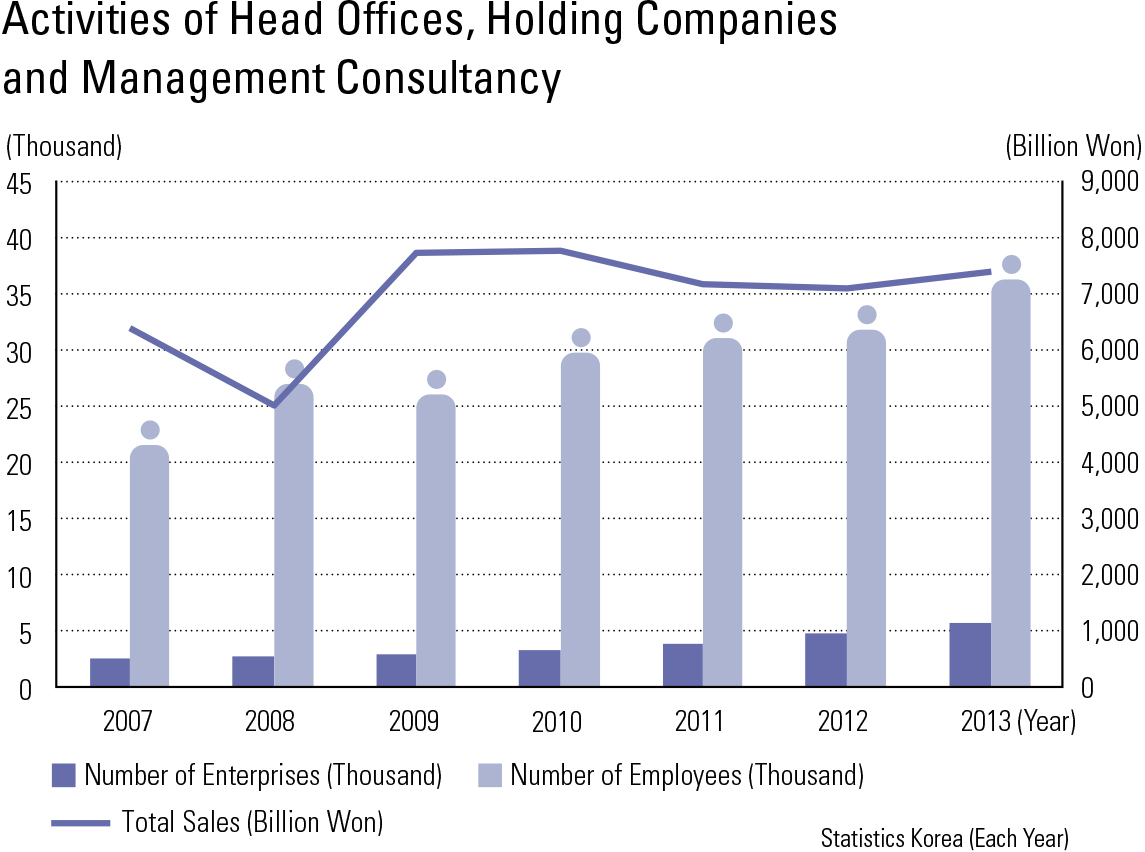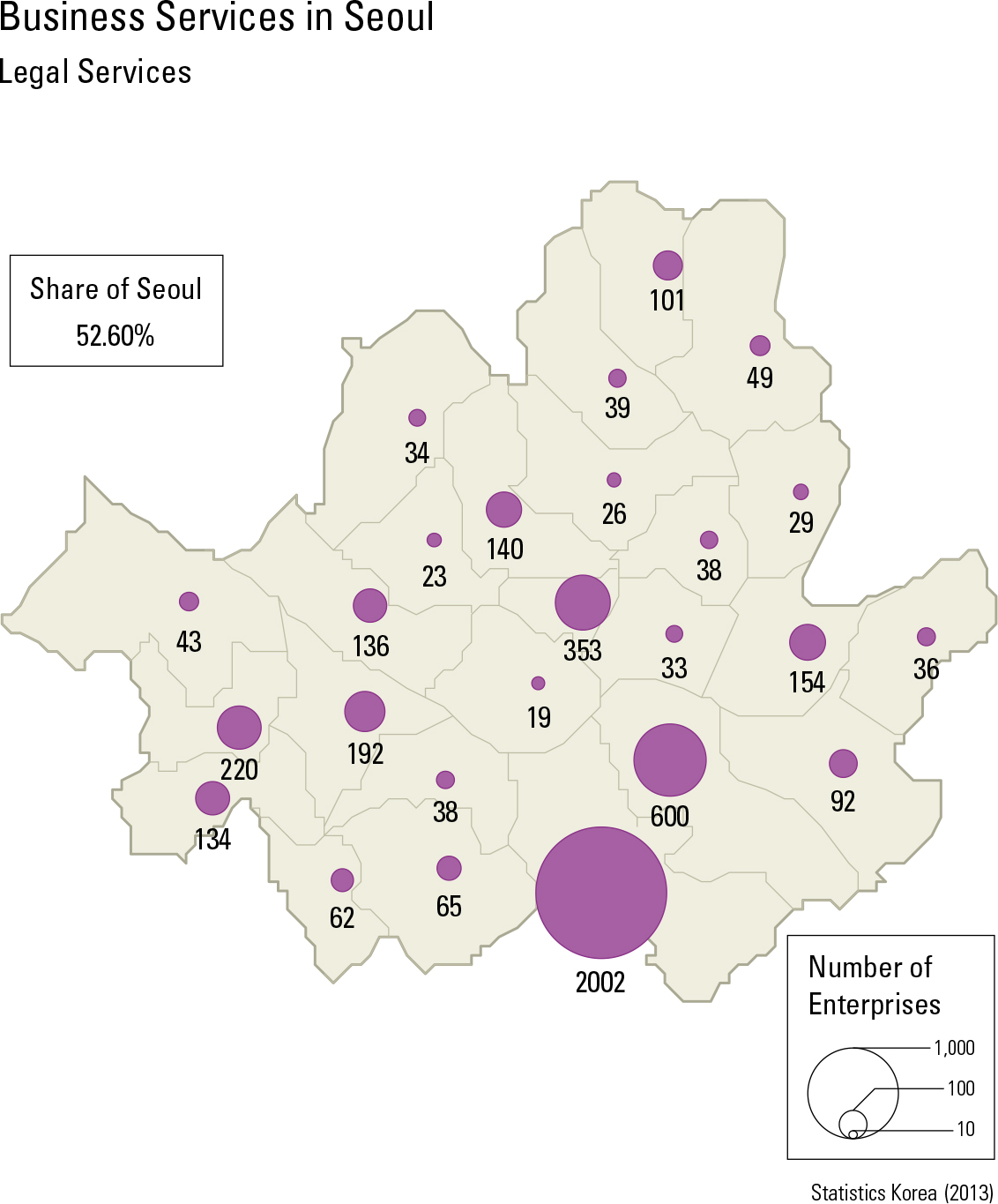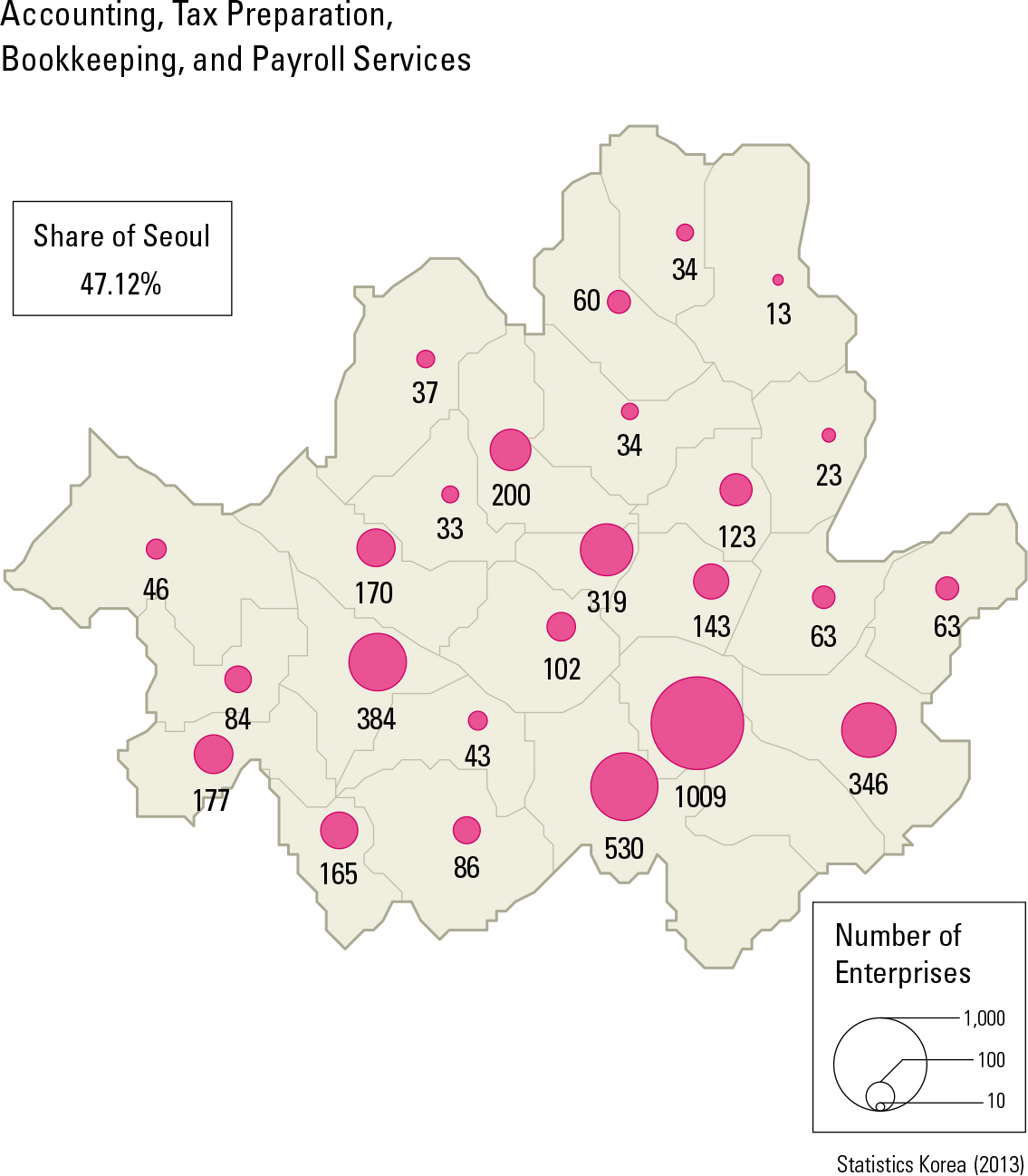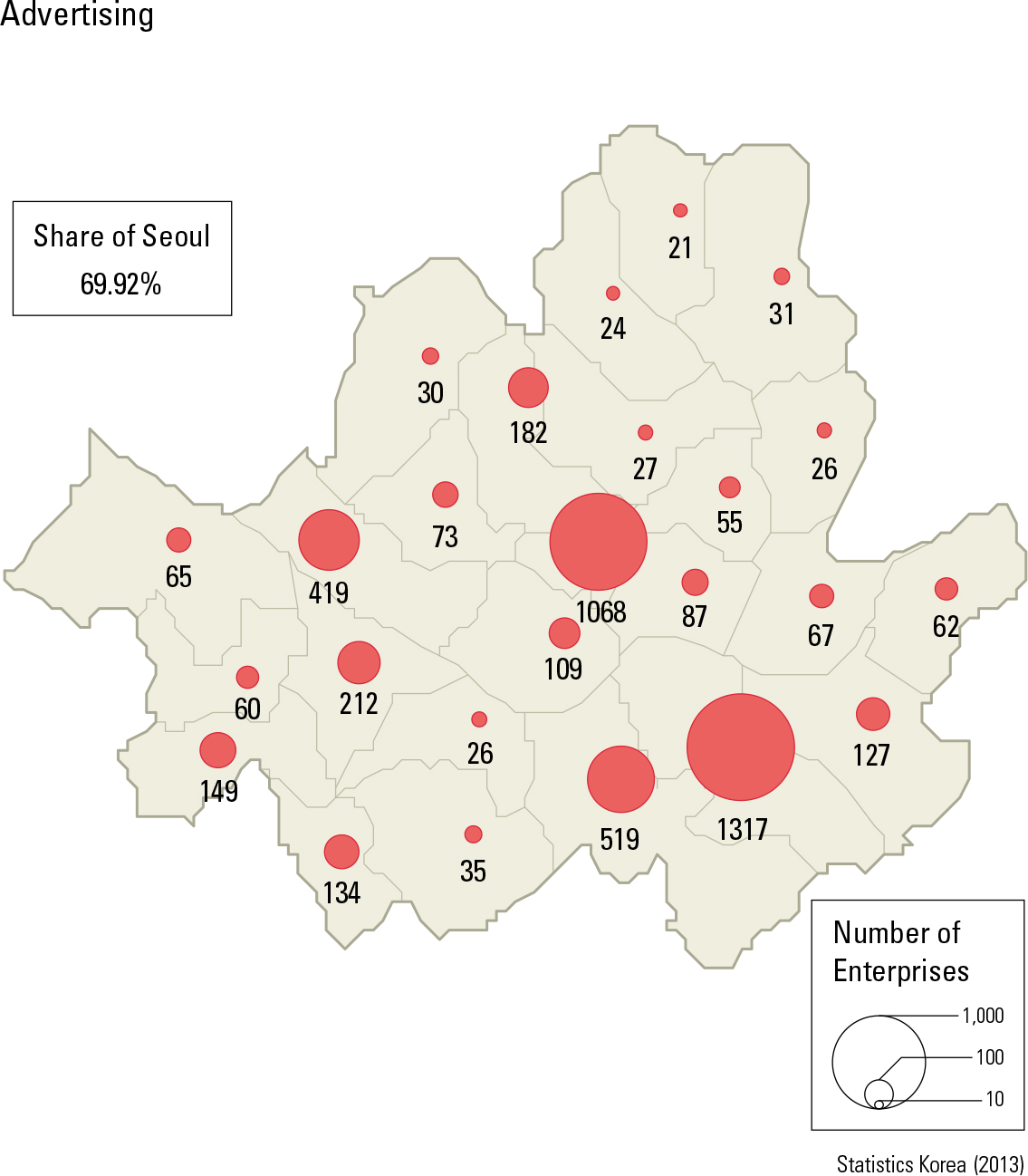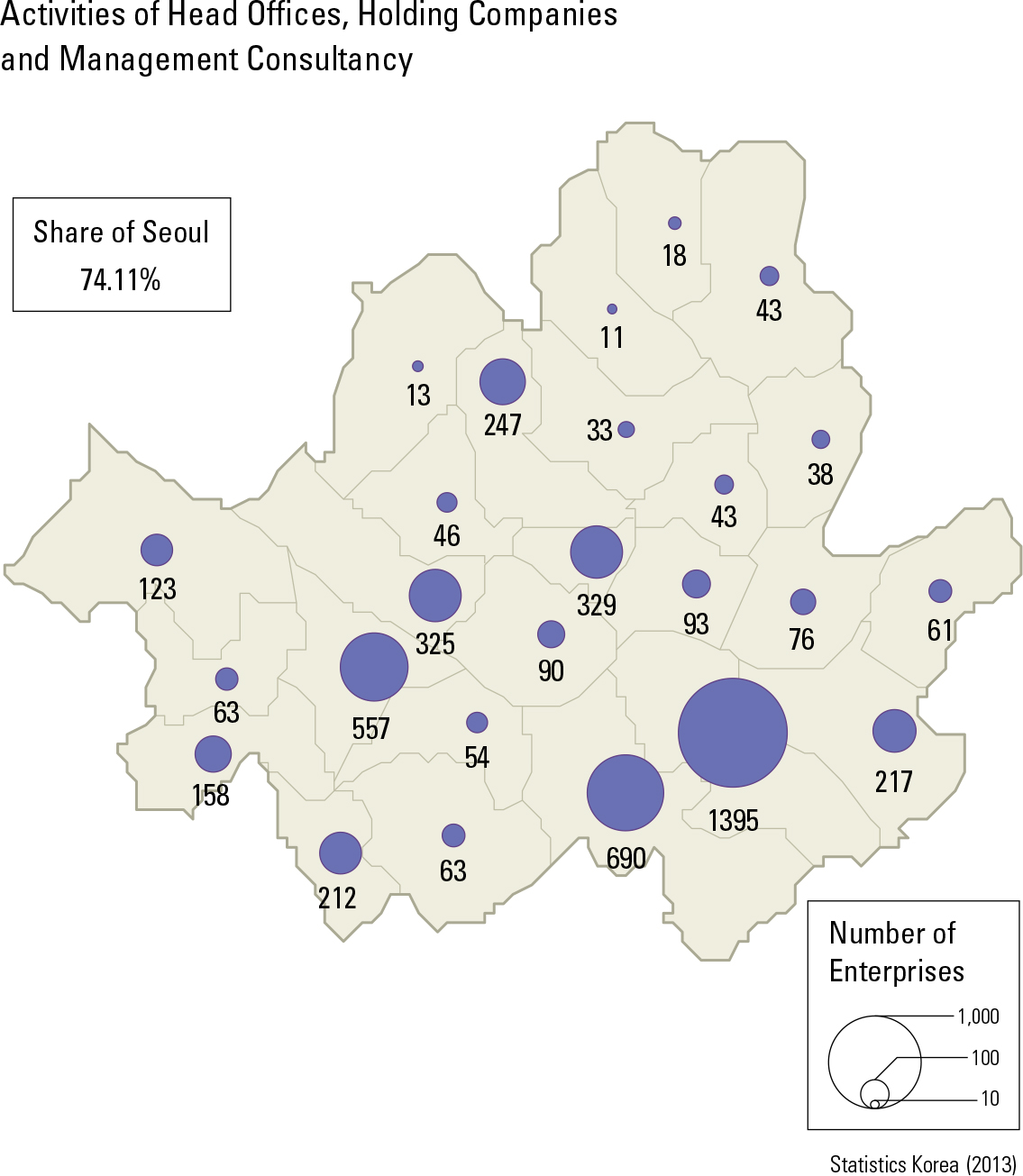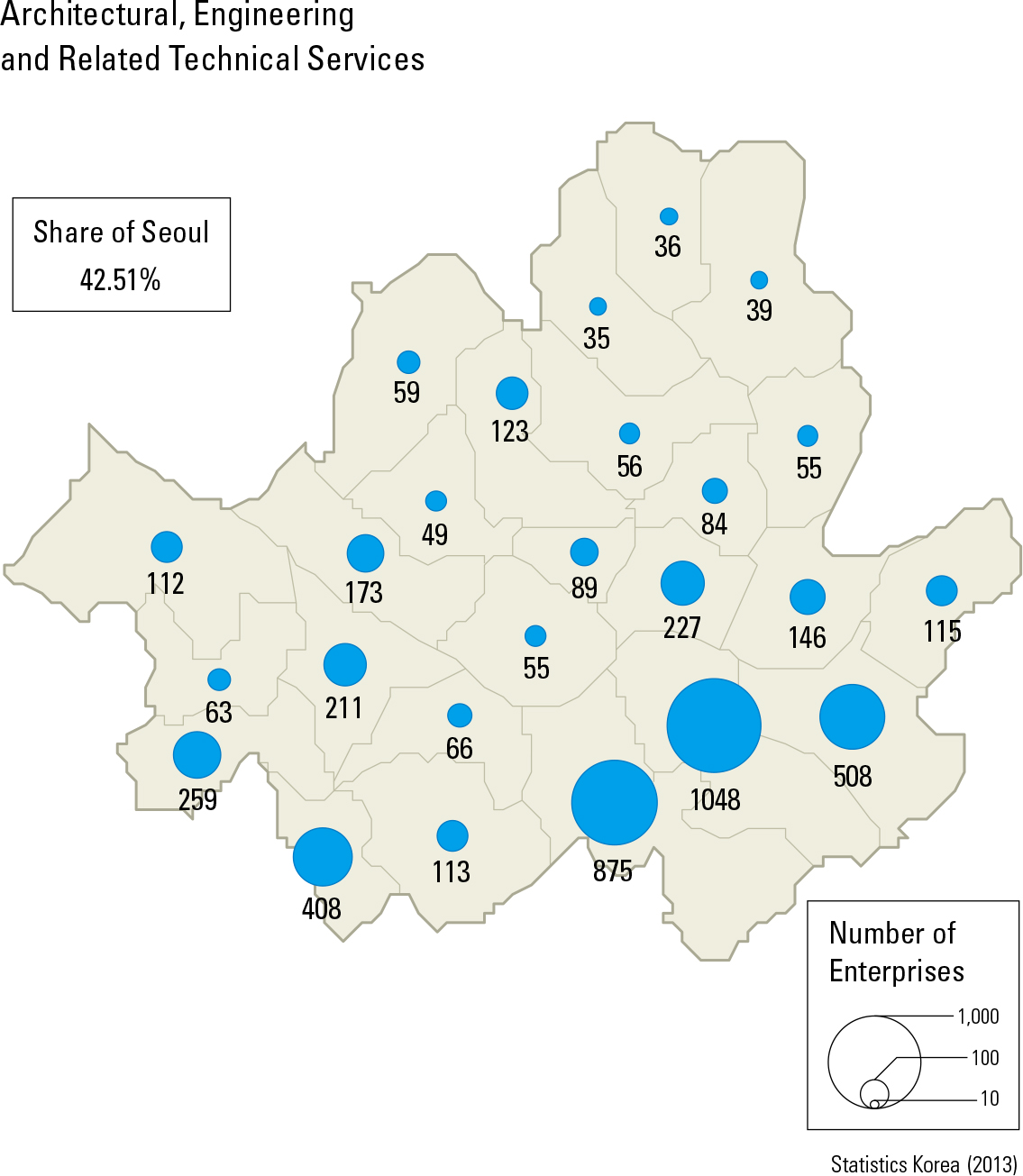English III
Depending on the particular service provided, the service industry can be divided into consumer services that provide services directly to consum- ers and producer services that provide services to businesses’ production activities. Consumer ser- vices include retail, food and lodging industries, tourism, and mostly individual services, while producer services include marketing, survey, re- search and development, advertising, accounting, consulting, finance, insurance and real estate, leasing, and so forth. Within producer services, - nance, insurance, real estate, and leasing are called FIRE industries, based on the initials of those businesses. In 2013, there were 174,000 FIRE in- dustry establishments with 1.2 million employees and 57 trillion won in total sales. Although FIRE industries do not actively perform production or construction, they support such industries. Unlike consumer services that tend to be located near consumers, business services are located near the businesses they serve, especially where the infor- mation is readily available. The finance service industry, excluding the insurance and annuity service industries, encom- passes a broad range of businesses that manage funds. Nationally, there are about 22,000 estab- lishments and 273,000 employees. They tend to be concentrated in the six greater metropolitan areas, including Seoul, that have a rather active flow of capital. Insurance services raise funds to provide risk management services to hedge against the uncertainty risk of either short- or long-term losses of life or property. Annuity ser- vices create and manage guaranteed retirement funds or post-retirement income funds. Mutual bene t associations for individuals or groups and pension deduction companies are in this category. There were about 8,500 companies and 265,000 employees in insurance and annuity service in- dustries in 2013. Insurance and annuity service industries have a relatively higher urban concen- tration than nance services. The real estate industry involves managing, renting, purchasing, and sales of owned or leased buildings, land, and other real estate (excluding cemetery lots). There were 119,000 real estate businesses with 413,000 employees in 2013. The real estate industry constitutes the highest pro- portion of the FIRE industries and tends to be concentrated in large metropolitan areas where the population movement is most active. Leasing businesses range from renting small household equipment to private individuals or households to leasing major industrial mechanical equipment without operators to business establishments. This leasing business also includes leasing of intangible properties. Nationally there were 14,000 real es- tate establishments and 54,000 employees in 2013
page_2 |
